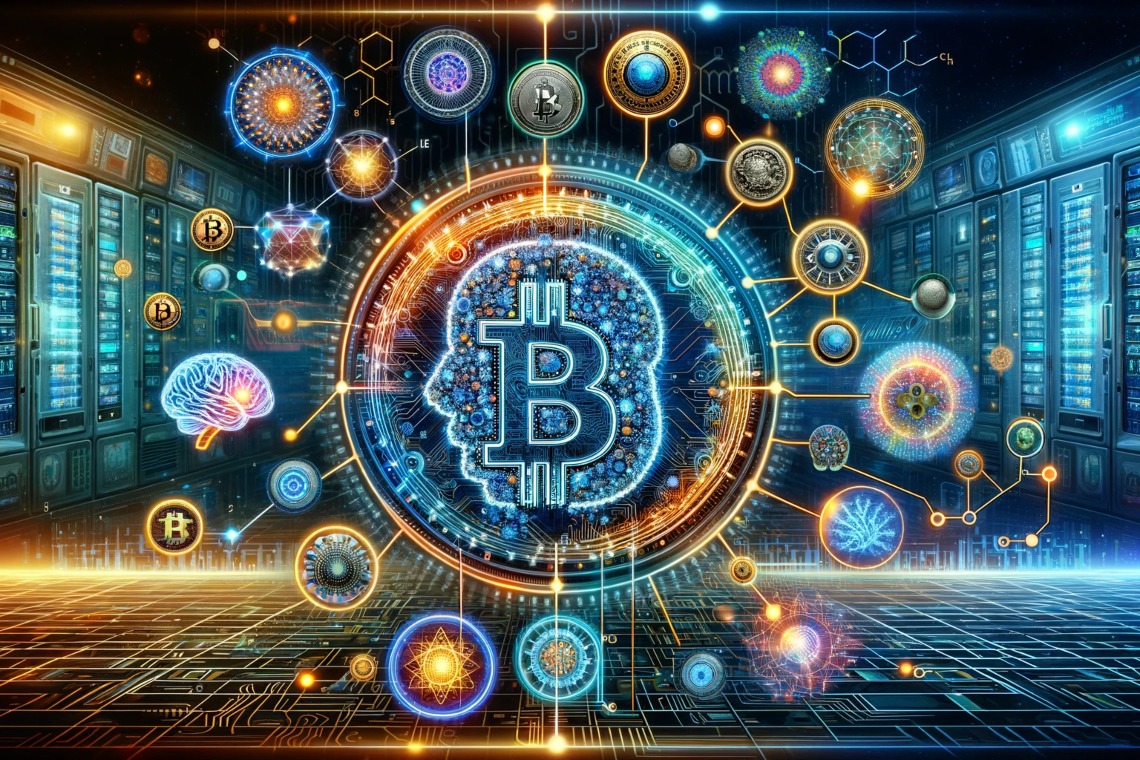Yesterday, the renowned co-founder of Ethereum, Vitalik Buterin, published a lengthy post on his blog regarding the relationship between cryptocurrencies and artificial intelligence.
In particular, he tried to answer a question that he claims to receive often, namely what are the intersections between crypto and AI that he considers most fruitful.
The intersection between crypto and artificial intelligence (AI), according to Vitalik Buterin
According to Buterin, blockchain and artificial intelligence are becoming increasingly powerful, with a growing number of use cases at the intersection of the two areas.
Vitalik, however, also points out that some of these use cases make much more sense and are much more robust than others, while others are less interesting or less solid.
He states that he believes that the most promising and easiest to implement are those in which the underlying mechanism continues to be designed more or less as before, but the individual actors become AI, allowing the mechanism to operate effectively on a much smaller scale.
Instead, he believes that the most difficult applications to manage correctly are those that attempt to use blockchain and crypto techniques to create a “singleton”, that is, a single decentralized and reliable artificial intelligence.
Actually, he says he still considers these latest applications promising, both in terms of functionality and improving AI security, but they suffer from greater risks of failure and require more caution.
The projects between crypto and artificial intelligence mentioned by Vitalik Buterin
The most mentioned crypto project in this article is Worldcoin, whose team Buterin thanks for the collaboration in writing the post together with Modulus Labs, Xinyuan Sun, Martin Koeppelmann, and Illia Polosukhin.
Worldcoin is indeed a project somehow connected to ChatGPT, although it is not a project directly based on artificial intelligence.
Worldcoin is a project carried out by the Worldcoin Foundation, which is a special non-profit company based in the Cayman Islands.
The most well-known co-founder of the project is Sam Altman, co-founder and CEO of OpenAI, the company behind ChatGPT.
Speaking specifically about artificial intelligence, Buterin states that he believes the project that has done the most to reduce black-box attacks by limiting who or what can query an AI model is Worldcoin.
In fact, the project extensively uses artificial intelligence models at the protocol level, to convert iris scans into short “iris codes” that are easy to compare for similarity, and to verify that the object being scanned is indeed a human being.
In addition, it does not allow anyone to simply access the artificial intelligence model, but it uses reliable hardware to ensure that the model only accepts digitally signed inputs from enabled cameras.
But then he also adds that it is not guaranteed that this approach will work, because it is possible to launch attacks against biometric AI using physical patches or jewelry on the face.
It also mentions other crypto projects somehow related to AI, but without going into detail.
Crypto-AI applications
Buterin has identified four categories in which there are potential overlaps between AI and blockchain.
The first, considered the most feasible one, is that of applications where artificial intelligence acts as a player in a game. For example, these are the applications where the ultimate source of incentives comes from a protocol with human input, such as prediction markets.
The second one, with high potential but high risks, is that of applications in which artificial intelligence acts as a game interface.
For example, these are applications where artificial intelligence is used to help users understand the crypto world around them, such as those that can help identify scams.
The third one is that of applications in which artificial intelligence establishes and controls the rules of the game, for example to help DAOs make subjective decisions.
Finally, the last one is related to the use of artificial intelligence to establish the objective of the game, namely long-term strategies that involve the use of blockchains as infrastructure to build better artificial intelligence models.
Concrete applications
From Buterin’s reasoning, specific concrete applications of the blockchain in relation to activities carried out by artificial intelligence do not emerge.
What emerges are development potentials, and projects that are trying to do something about it. For example, Worldcoin uses the blockchain only to issue a token.
In fact, not by chance, it also invites developers to proceed with caution in this direction, precisely because these are new developments not without risks.
This is effectively a pioneering field of blockchain usage, also because the artificial intelligence sector itself is still in a pioneering phase.
In addition, the use of AI in the crypto field also generates challenges, such as potential overloads and contradictory machine learning.
The volume of operations that an AI model typically performs is enormous, to the point that it would be a problem to bring them all onto the blockchain.
In addition, it is often impossible to accurately understand all the steps of reasoning carried out by an artificial intelligence, making it difficult or even impossible to predict all the outcomes with precision.
In short, we are still far from being able to have widespread use of artificial intelligence in the crypto world, even though the potential is there.
